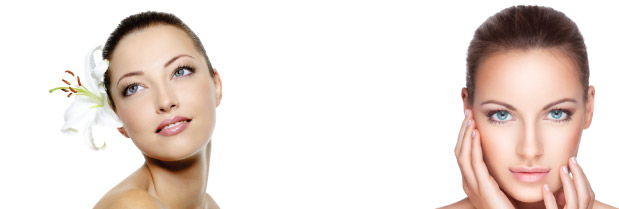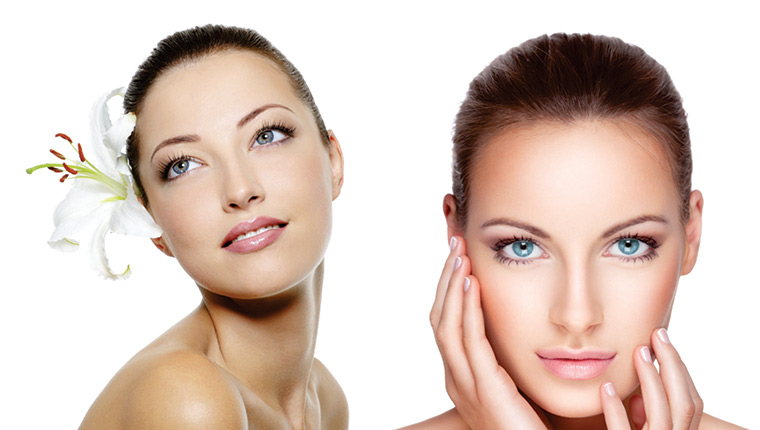What are areas treated with fillers?
From simple correction of nasolabial folds, mid-cheek and lip augmentation, face, neck, and hand rejuvenation, under eye volume restoration the fillers are now the safest and most popularly conducted procedure for wrinkle correction with results staying for a long time. A touch-up correction in 2 weeks time may be needed by some patients

Any side effects?
Redness which is often transient, pain which is minimized by ice compresses and surface anesthetics, tenderness and temporary swelling are commonest reported by patients who have undergo filler injections. These reactions are transient and resolve spontaneously in a few days.
Rare adverse effects like lumpiness, infections and vascular occlusion are reported in a very few patients. In case of any persistent discomfort after injection be sure to contact or message your doctor.
Any precautions?
Stop aspirin and pain killers if any 2-3 days before procedure
Do's and Don't
After treatment care
Apply ice packs for the first 48 hours, no make up for same day
• Limit during the first 48 hours
• Limit any vigorous massaging for the first week
• avoid exposure to extreme heat or cold including hot beverages
• Avoid strenuous activities for 1-3 days
• Keep the lips( if injected) clean to avoid infection (antibiotics may also be dispensed)
• Risks & Complications may occur as with other injectable: but rare
• For details post us a query
Know about Fillers How does aging cause facial changes
Sagging occurs in the aging face not only by gravity but also because of the changes in the fat compartments and loss of volume that accompanies aging.
Skin aging is reflected by the following changes
- Loss of collagen and elastic fibres
- Loss and displacement of fat under the skin
- Gravity induced dissent of soft tissue and loss of muscle tone
- Resorption of bone and cartilage
- muscle action induced creasing of the skin
What are the age related changes seen on different face zones?
Upper face-shows forehead lines, vertical crease between the brows, loss of skin elasticity, increase fragility and dull tired looking skin.Brow muscles and blood vessels become more prominent
• Mid faceshows :
under eye depression with crease or wrinkling in outer part of eye corners called as crow’s feet
• Darker ‘tired eyes’ appearance due to loss of volume between muscle around the eye and overlying skin of the lower eyelid
• Cheek fat redistribution downwards creating sagging and flattened cheeks, nasolabial crease
• Nasolabial crease
is a giveaway sign of aging and results from either cheek fat sagging, loss of volume or muscle hyperactivity.
• Cheekbones are the key point of the midface. High cheekbones are a sign of youthfulness
• Lower:
face-shows age changes as thinning of lips and loss of lip volume
• Down turning of the angles of the mouth depletion of chin fat.
• Loss of jawline definition and the appearance of a horizontal chin crease
Hand rejuvenation
neck etc are other areas commonly treated with fillers to restore and refill agin grelated changes.
What are dermal fillers:
Fillers are molecules used to restore youthfulness in Aging face by adding volume, improving wrinkles/fold, lifting the sagging skin and imparting of choice for wrinkle correction through a minimally invasive technique which can be conducted over 30 minutes.. Fillers when injected in the skin can replace restore volumize and rejuvenate. Filler injections temporarily smooth wrinkles by adding volume under the skin.
What are hyaluronic acid fillers?
• Hyaluronic acids (HAs) fillers are the most popular and commonly used fillers
• HA is a naturally occurring sugar present in the ody, the HA fillers are non animal stabilized and superior to collagen fillers with minimal allergy and the human skin exhibits no species or tissue specificity. The water attractant property of the HA enables it to hydrate, volumize and restore contours in aging skin.
How are fillers injected?
the injections of various particle size fillers are performed in a single or 2 sessions to achive wrinkle reduction, volume and restoration of textural changes
How long do they last?
Global studies have shown that the fillers depending on their particle size may last for minimum 6 months and longest for about a year after injection.
What does the treatment involve?
The filler is an injectable and procedure is conducted over 15 to 30 mins. The injection technique involves deposition of filler material into various skin planes to restore and refill lost volume. There is minimal pain and person walks out of procedure with minimal injection marks. The key futures are instantaneous correction, long term results, safe and sans any down time.

